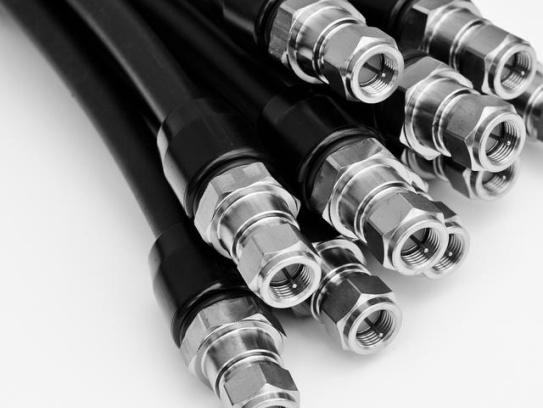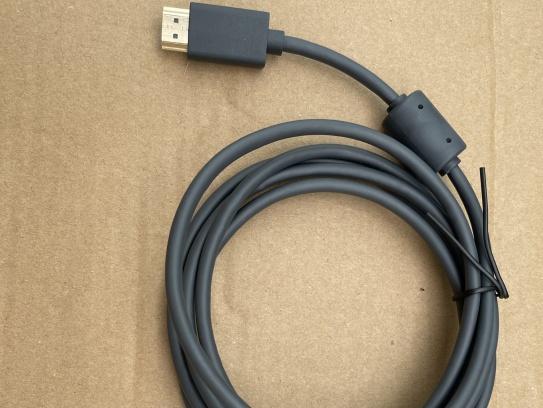5G’s Technical Challenges Addressed by 50μm Micro-CoaxA. High-Frequency Signal IntegrityFrequency Range: 5G FR2 (24–71 GHz) requires cables with minimal dispersion and skin effect losses.Performance Data:Parameter 50μm Micro-Coax PCB Microstrip (FR4)Attenuation @ 28 GHz 0.4 dB/cm 1.8 dB/cmPhase Variation (±°/m) 0.3° 5.2°Bandwidth DC–110 GHz < 40 GHzSource: Huber+Suhner Sucoflex® 100B datasheet B. Miniaturization and DensitySpace Constraints: Massive MIMO antennas integrate 64–256 elements per array; 50μm cables reduce interconnect cross-sectional area by 80% vs. 0.47mm coax.Exam.
Read more →Forget the shiny new toys for a moment – fiber optics and 5G rightfully grab headlines, but when building the complex nervous system of a smart city, a veteran technology plays a surprisingly vital and enduring role: coaxial cable. Often perceived as “old tech,” modern coaxial cable (coax) brings unique strengths to the smart city table, offering reliability, bandwidth, and cost-effectiveness that make it indispensable, especially in retrofitting existing infrastructure or deploying specific services rapidly. Let’s explore how coax integrates into the smart city fabric. Why Co.
Read more →When sourcing micro coaxial cables for electronics, telecommunications, or medical devices, one critical question arises: Should you buy imported or domestically produced cables? Price is often the deciding factor, but cost alone doesn’t tell the whole story. This article breaks down the price differences between imported and domestic micro coaxial cables, explores why these gaps exist, and provides actionable tips to help you make informed, budget-friendly decisions. Why Are Imported Micro Coaxial Cables More Expensive? Imported cables typically cost 20–50% more than domestic alt.
Read more →Why Recycling Matters Now As global e-waste reaches record levels, the telecom and electronics industries are prioritizing micro-coaxial cable recycling. These thin, high-frequency cables (used in 5G networks, medical devices, and aerospace) contain valuable copper and rare metals. Leading manufacturers like CommScope and TE Connectivity recently formed the Micro-Coaxial Sustainability Alliance to standardize recycling processes. How Recycling Works Collection: Dedicated bins at electronics retailers and corporate e-waste drives Processing: Specialized shredders separate PVC insulation fr.
Read more →In the high-stakes world of medical technology, signal integrity, durability, and electromagnetic interference (EMI) resistance are non-negotiable. Coaxial cables, with their unique design and shielding capabilities, have emerged as a critical component in advanced medical devices. This article explores how coaxial cables contribute to healthcare innovation, their key applications in medical equipment, and why they remain indispensable in this rapidly evolving field. Why Coaxial Cables Are Vital for Medical DevicesCoaxial cables excel in environments demanding high-frequency signal accuracy and m.
Read more →Meta Description: Discover aviation-grade fire-resistant micro-coaxial cables engineered to exceed FAA & EASA flammability requirements. Ideal for aircraft wiring, UAVs, and mission-critical systems. Next-Gen Fire Safety in Aviation Wiring The aerospace industry faces relentless pressure to enhance safety while reducing weight and complexity. A breakthrough emerges with new fire-resistant micro-coaxial cables engineered specifically to comply with aviation standards like FAA FAR 25.853 and EASA CS 25.853. These cables represent a critical leap in safeguarding aircraft el.
Read more →Can't find what you're looking for?
Our customer support team is ready to assist you with any questions or concerns.
Search FAQs
Related Articles
EMP-Shielded Micro-Coaxial Cables: The Lifeline for Secure Military Communication Systems
In the high-stakes world of modern military operations, mission-critical communication is the cornerstone of coordination, intellige.
How to choose Coaxial Cable Assemblies for radio systems
Selecting the right coaxial cable assemblies is critical for optimizing the performance, reliability, and longevity of radio systems. Whet.
Coaxial Cable with PE Insulation for Longevity
In today’s interconnected world, reliable signal transmission is the backbone of industries ranging from telecommunications to security sy.
How to Cut and Terminate Coaxial Cable Assemblies at Home
Coaxial cables are the unsung heroes of modern connectivity, powering everything from home televisions and internet routers to security ca.
Failures in Micro Coaxial Cables
Micro coaxial cables are widely used in high-frequency applications due to their compact size, flexibility, and reliable signal transmissi.
How to Identify Counterfeit Micro Coaxial Cable Connectors (MHF4/U.FL, etc.)
Counterfeit micro coaxial connectors (commonly types like MHF4, U.FL, SMP, MCX) pose a significant threat to electronic device performance.



